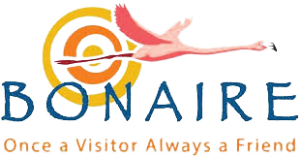Sleepy Bonaire has always been known primarily as a dive destination, and for good reason: It’s ringed by a series of glorious offshore reefs.
Bonaire has started to take its place as a landlubber’s destination also, with a developing art and dining scene, and a slew of fascinating land-based activities. In the main town, Kralendijk, art lovers flock to several Art Galleries, founded by local artists. The permanent displays feature evocative oils, photographs, sculptures and more. Sophisticated visitors are taking advantage of an increasing number of fine restaurants featuring French, Italian, Argentine and creative cuisines.
Still, Bonaire is a long way from becoming an urban mecca – and, thankfully, it will never be one. Here, the flamingo population rivals the human one, building size is strictly limited, and the circumference of the island is a protected marine park. On Bonaire, ‘nightlife’ means heading out for a night dive. Locals gather at a few spots in Kralendijk to watch the sunset, socialize and tip a few.
Park And Dive
Prime among these wonders is the underwater life. Drive down the coastal roads and you’ll see stones marked with the names of dive sites. Pull over, suit up or don snorkeling gear, and jump in. Two minutes’ swim (literally) brings you to a reef teeming with colorful fish and complex landscapes of coral. You’ll find drive-through dive stations where you can refill your tanks before heading out on your own to alluring spots.
Amazing as the diving is, there’s much more to do on this underappreciated island. Drive north along the stunning road up Bonaire’s west coast past a prime flamingo-viewing lake called Gotomeer. Spend a day in Washington-Slagbaai National Park, more than 13,000 acres of flora and fauna, where wide dirt paths are lined with prickly pears and many-armed guida cacti and become surrounded by native trees. Here, startling rock formations like Seru Bentana (Sky Window) rise against the sky, and any number of birds and beasts stroll or fly by at the Pos Mangel watering hole. Looking for pure isolation? Head to one of the park’s many beaches, some no bigger than couple-sized.
Heading south down the east coast, you’ll come to the tiny village of Rincon where you can enjoy the historical and cultural background of the island. Catch the panorama from Seru Largu, a hilltop viewpoint that’s a favorite with lovers. Drive south to the eerie salt pans, signs of the salt industry that still thrives here. Just below the white mountains of salt rising from purple ‘lakes’, you’ll find the Flamingo Refuge. You can stand roadside and (very quietly) observe these elegant and shy creatures. Park yourself close by on Pink Beach, and at sunset you can see them lighting up the sky as they wing their way on their nightly trip to Venezuela. Nearby, tiny former slave huts bear testament to a part of Bonaire’s history, preserved for visitors to see.
Up for a watery adventure of a different kind? Sign up with the Mangrove Info and Kayak Center for a kayaking session through Bonaire’s pristine mangrove system – one of the few left in the world. Other water activities include wind- and kitesurfing.
Dance Clubs. Dinner/Dances, Nightclubs. Pubs. Theaters. Cinemas. Live music. Karaoke.
United operates two weekly non-stop flights to Bonaire from Houston, TX and one weekly non-stop flight from Newark, NJ. (The Newark flight is seasonal.) The Houston flight departs on Friday nights, arriving into Bonaire on Saturday mornings. The return flight departs on Saturday mornings arriving into Houston later the same day. The Newark flight departs Saturday nights, arriving into Bonaire on Sunday mornings through February 2013. Commencing on March 1, 2013, the Newark flight will depart Friday nights, arriving into Bonaire on Saturday mornings. The return flight departs on Saturday morning arriving into Newark later the same day.
Delta operates a weekly non-stop flight to/from Bonaire from Atlanta on Saturdays.
Insel Air operates a weekly non-stop flight to/from Bonaire from Miami on Saturdays and a weekly direct flight to Bonaire on Saturdays from Charlotte via Curacao.
Other flights from North America generally arrive in Aruba or Curacao.
Flights between Bonaire, Aruba and Curacao are available on Dutch Antilles Express (DAE), EZ Air, Insel Air and Tiara Air.
Divi Divi Air flies between Bonaire and Curacao.
US citizens must travel with a valid passport.
Canadian citizens can provide a valid passport or an original copy of birth certificate (with raised seal) or voter’s registration card accompanied by a photo ID (i.e., driver’s license) and return ticket.
Gotomeer is a favored flamingo spot. Rincon, the island’s oldest village and just beyond its borders are the 500-year-old Arawak Indian inscriptions. Washington-Slagbaai National Park. Salt flats. Primitive huts. Willemstoren lighthouse. Windsurfing at Lac Bay. Bird watching of 189 species of birds. Diving and snorkeling Bonaire’s National Marine Park. Mountain biking. Hiking. Kayaking. Deep sea fishing. Horseback riding. Kitesurfing at Atlantis Beach.
1) Write a letter, at least three months in advance of your wedding date, to the Registry Office on Bonaire notifying them of your intentions and request permission to marry.
2) Must provide birth certificate and prove both are eligible to marry – include divorce decree or death certificate if necessary
3) One of the couple must be a temporary resident of Bonaire for 7 days prior to wedding.
Registrar’s Office Tel: 599-717-5330. Fax: 599-717-8416.
SHARE THE LOVE



